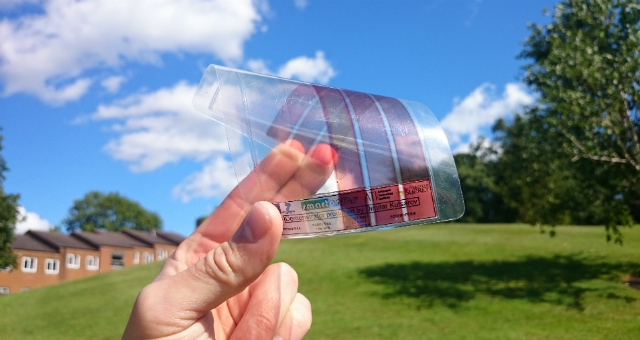Moth-inspired graphene is the future of smart wallpaper and IoT power
A new nature-inspired graphene discovery by researchers from the University of Surrey could lead to “smart wallpaper” capable of generating electricity from waste light or heat, and even powering Internet of Things applications.

The researchers showed how graphene can be manipulated to create the most light-absorbent material for its weight ever known. The team used a technique called nanotexturing, which involves growing graphene around a textured metallic surface. The team was inspired by moth eyes in the creation of the ultra-thin graphene sheets designed to more effectively capture light. Graphene, at just one-atom thick, is very strong but known to be inefficient at light absorption. To combat this, the team used the nano-patterning to localize light into the narrow spaces between the textured surface, which enhanced the amount of light absorbed by the material by about 90%.
Why moth’s eyes?
“Moths’ eyes have microscopic patterning that allows them to see in the dimmest conditions. These work by channeling light towards the middle of the eye, with the added benefit of eliminating reflections, which would otherwise alert predators of their location,” said Professor Ravi Silva, Head of the Advanced Technology Institute.We have used the same technique to make an amazingly thin, efficient, light-absorbent material by patterning graphene in a similar fashion.”
According to the team, the discovery could have a significant impact on solar cells, allowing them to capture and store light indoors and in very dim light. The development could be used to create “smart wallpaper” or “smart windows” which generate electricity from waste light or heat and then power IoT-related products like energy harvesters and sensors.
“Nanotexturing graphene has the effect of channelling the light into the narrow spaces between nanostructures, thereby enhancing the amount of light absorbed by the material. It is now possible to observe strong light absorption from even nanometre-thin films. Typically a graphene sheet would have 2-3% light absorption. Using this method, our ultra-thin coating of nanotextured few-layer graphene absorbs 95% of incident light across a broad spectrum, from the UV to the infrared,” said Dr. José Anguita of the University of Surrey and lead author of the paper commented.
The team’s next step is to incorporate the material into existing technologies, including optical devices, to monitor its performance in action. Surrey’s EPSRC funded Graphene Centre is currently looking to team up with companies in the industry to expand the technology.

Comments are closed, but trackbacks and pingbacks are open.